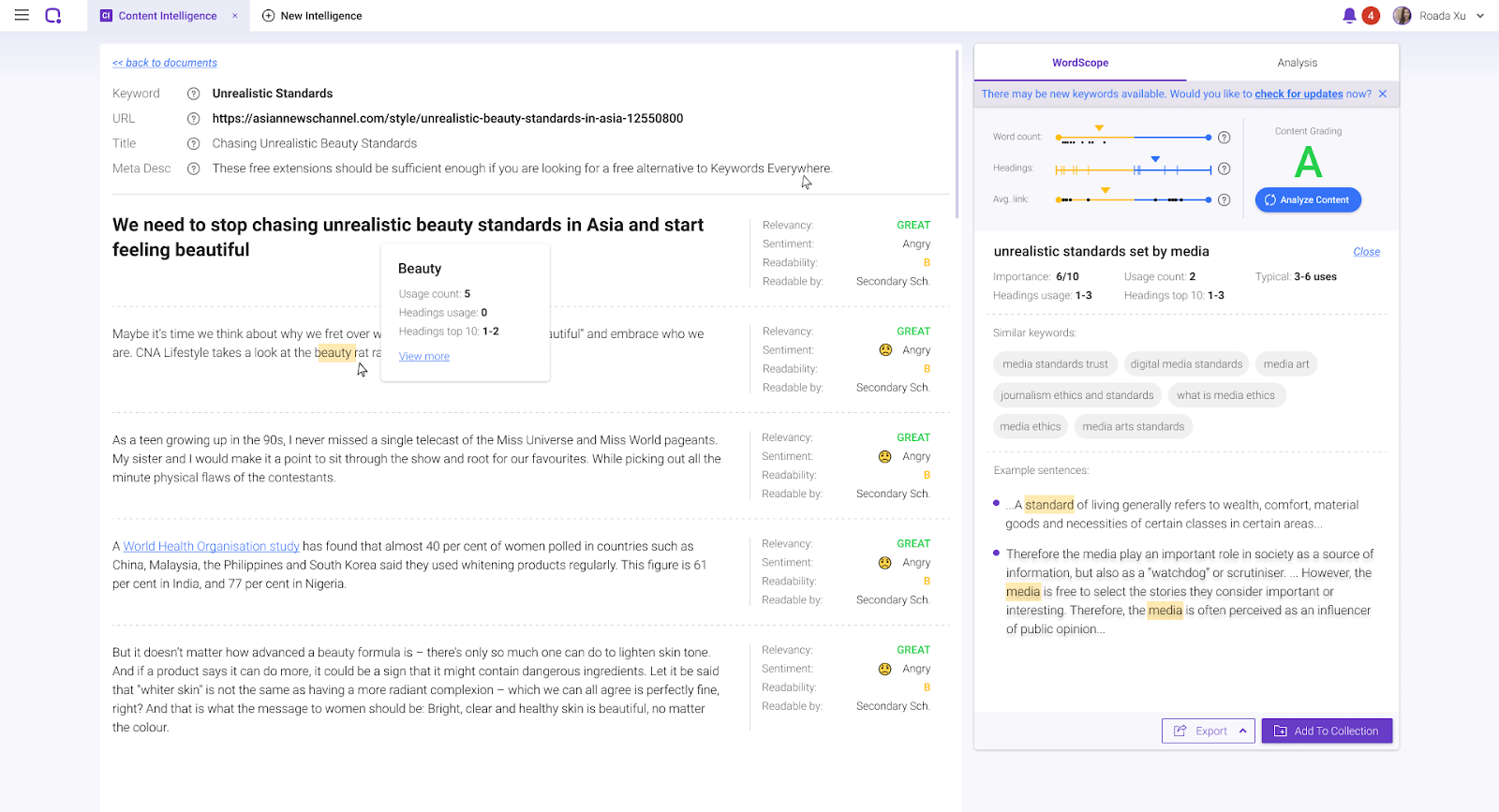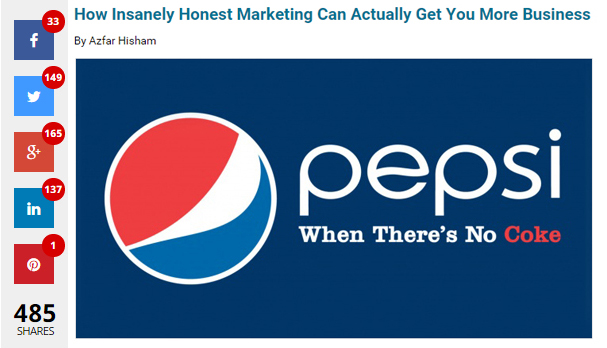Steph W. from SEOPressor


...help you check your website and tell you exactly how to rank higher?


92
score %
SEO Score

Found us from search engine?
We rank high, you can too.
SEOPressor helps you to optimize your on-page SEO for higher & improved search ranking.
By winniewong on November 28, 2019

When you hire copywriters, or even if you are one yourself, the task seems relatively simple: write good content.
But how do you define “good”? This is a thornier subject than you might think.
One method is to look at holistic factors. Chris Ribaudo looks at factors like understandability, likability, depth, and emotion.
These are the classic factors that have been involved in critiquing writing work for centuries, but their origin comes from literary criticism in fiction.
In these data-driven days, where most content is factually based, they offer a ‘soft’ solution to the issue of assessing quality. These factors are primarily subjective and almost impossible to analyze in a rigorous and consistent manner.

So how do you find metrics to assess copywriting performance?
Even that isn’t a straightforward process. There are two rounds of analytics you need to be prepared to do: pre-publishing and post-publishing.
In this article, we’re going to get into the different data-driven solutions to assessing your writing quality. By the time we reach the conclusion, we’ll be talking about how you can use that assessment to improve things for your site.

Believe it or not, it is possible to assess how easily read-able an article is. Your writers should be understood by the vast majority of your audience.
It’s possible to write simply about complex topics. There are tools you can use to not only assess readability but improve it too.

Assessing readability:
In the Flesch reading ease test, higher scores indicate the material is easier to read, while lower scores mean the content is more difficult to read.
The formula assesses average sentence length and average word length by the number of syllables. The higher these values are, the lower the score becomes.
Any score below 30 can usually only be understood by those with a college graduate-level education. That said, a score over 90 can be understood by a 5th grader. Realistically, you want to be aiming for a score of around 60-70.
The Gunning-Fog index was created by an American businessman in the 1950s and offers a more nuanced look at the readability of a passage.
First, select a passage at random of 100 words. Next, create the average sentence length by dividing the number of words by the number of sentences. Then you count the complex words (those with three syllables or more). Divide the total number of words by the number of complex words and finally, times that by 0.04.
The resulting score will tell you how readable your content is. A score of 6 means it can be understood by a 6th grader. A score of 17 means it can be understood by a college graduate. As such, you want a score of around 10-12.
Both these tests have their limits. Not all difficult words have a lot of syllables, and not all words with a lot of syllables are difficult to understand. Equally, short sentences can be as confusing as long ones.
Still, as a rule of thumb, it gives you a litmus test. If you get bad scores, you know you need to do some editing.
If this all looks difficult, you’ll be glad to know there are tools to help you do most of the work.

By the way, what about that all-important title? After all, if the title is no good, no one will read the article.
My colleague has covered ways to boost your title for search and social, but here are another couple of tools to make it easier.

Now you’ve made sure your content is easily readable by humans, you need to make sure it’s also easily discoverable by search engine algorithms. If you don’t, those humans that now can read your content, won’t. Your tree will fall in the forest with no one there to hear it.
Good SEO is the key to good traffic. Here’s how to assess your SEO score:
Of course, there’s a lot going on here, and it may feel right now like by the time you’ve gone through all these processes you’ll never be able to publish at the rate you need to. Again, there are tools that will come to the rescue and allow you to optimize these in seconds.

So, between analyzing your readability and SEO optimization, you’ve done everything you can to make sure an article is ready to go.
Now, in order to continue to improve your performance, you’re going to have to do it iteratively. That means learning from every powerful content you publish in order to improve your next one.

Traffic is what you’re doing this for, right? I don’t need to tell you that you need to pay attention to it.
While no one single post is going to transform your traffic forever, every blog post will contribute to your long term success.
You need to make sure you’re measuring it accurately and seeing what you can learn from it ready for next time.

The 3 main sources of traffic:
Fortunately, there’s a single tool that will give you an idea of exactly how these different sources of traffic are combining to produce your overall audience figures.
Google Analytics is the single most robust and powerful tool for measuring traffic. It allows you to check:

Social media shares work differently to search engine traffic because people are effectively lending their endorsement to an article (or are actively condemning it, if you’re using flame-bait). This means that those who see the shares are far more likely to click the post.
As such, social sharing is a great shorthand for how popular the content and respected the content is with real audiences, as well as telling you how likely it is to go viral.
These include Facebook shares, LinkedIn shares, Retweets, and more.
Getting a lot of social shares is also a strong sign of good and likable content. There are key tools you can use to track these, including:
Comments are useful because they’re motivated responses to the content you’ve posted. People can share their evaluation or commentary on your content, or alternatively they can add to the content by sharing their own insights.
Feedback can be received via email or through social pages, and can let you know how people feel about what you’re posting. After all, a social share might seem like a good thing, unless the person sharing it says “look at this terrible article. I can’t believe they got it so wrong.”

 Comments, be it positive or negative shows that the content is compelling enough to get user engagement.
Comments, be it positive or negative shows that the content is compelling enough to get user engagement.Having said that, all feedback is positive, even when it’s negative, as long as you’re learning from it. Negative feedback is especially positive if that was your objective, as it can sometimes be when you’re using controversy to market.
You can measure the number of comments, evaluate the positive versus negative comments, and do both quantitative (statistical) and qualitative (insightful) analysis of the comments to help make your content better.
If the intent of the content is to make audiences take an action (and all content should motivate people to do that, whether explicitly or otherwise), then you need to track how well it is doing that.
This means taking your focus away from how good it is in a qualitative, soft way and instead measure how fit for purpose it is.
There are several ways your content can convert:
The point of a fit for purpose post is that it should convert. This means taking readers and turning them into active parties. You can see how well content is converting by looking at the ratio of readers in the audience to purchasers/subscribers.
If an article draws a huge crowd that’s one kind of success. If an article makes all 20 people who read it drop a thousand dollars on a course, that’s a different kind of success.
At times, we can have a love-hate relationship with Google rankings. They simply take time to rank and build up traction.
That’s why every once in a while, you should always check on your website rankings and discover if there are any of your new content that are now ranking for unexpected keywords.
You can do this using BiQ’s Rank Intelligence and simply key in your website to start crawling.
Once you discover your rankings, you can even further optimize your content to be more relevant to the keyword.
Tools aren’t the end goal. Don’t simply use everything in this list to tick-box a checklist and say you’ve done everything. Now you know what processes are available, you need to undertake an analysis of your own site, your objectives, and how to best use these tools to match those objectives.
For some, it may be all about the conversion numbers. After all, that’s the direct route to profit.
Early on when you’re still in the audience development phase, more qualitative factors like readability and social sharing will matter more. You need to know you’re getting the greatest number of eyes on your website.
It’s also worth mentioning that your copywriter, whether that’s you taking on the role yourself or someone you’ve hired, is therefore only one cog in the machine. They have a responsibility to write the content, and you need to give them the tools to ensure that content matches your expectations.
If you don’t give your writer a pre-established goal then it isn’t their fault the content doesn’t convert.
Equally, you can serve several objectives at once in a single piece of writing, but you have to prioritize. Is the piece mostly about selling, or is it mostly about establishing authority? Is it about getting sign ups or is it about entertaining?
These factors are all inter-related, but one must come first. Fortunately, there’s a tool to help you measure success, whichever it is.
The mark of a great writer is not just how well they write, but how well they can respond to changes. Fulfilling the brief is one thing, but it’s also important to be able to work longitudinally with copywriters. Your relationship with them will develop and change. So should your approach.
When you start out, you’ll have relatively little data to go on. As you start to collect more with the help of these tools, this will inform and shape your approach.
If your writer’s work is performing poorly, you can present your writer with the data and make recommendations to improve that performance. When they know these are informed decisions rather than based purely on matters of taste, they should be able to easily understand why they need to adapt.
What’s more, when they see the results change as a result of the adaptation, they’ll feel more motivated to continue doing so in the future. Anything else is stubbornness and a clear warning sign that they could jeopardize your long-term success.
What other tools to do you use to inform how your content strategy evolves? Any crucial approaches I’ve missed? Are you a disgruntled copywriter who thinks they know better? Drop your ideas in the comments below.
This post was originally written by Azfar and published on Oct 13, 2016. It was most recently updated on November 28, 2019
Related Links:
Updated: 7 January 2026


Save thousands of dollars (it’s 100x cheaper)

Zero risk of Google penalty (it’s Google-approved)

Boost your rankings (proven by case studies)
Rank High With This Link Strategy
Precise, Simplified, Fast Internal Linking.
